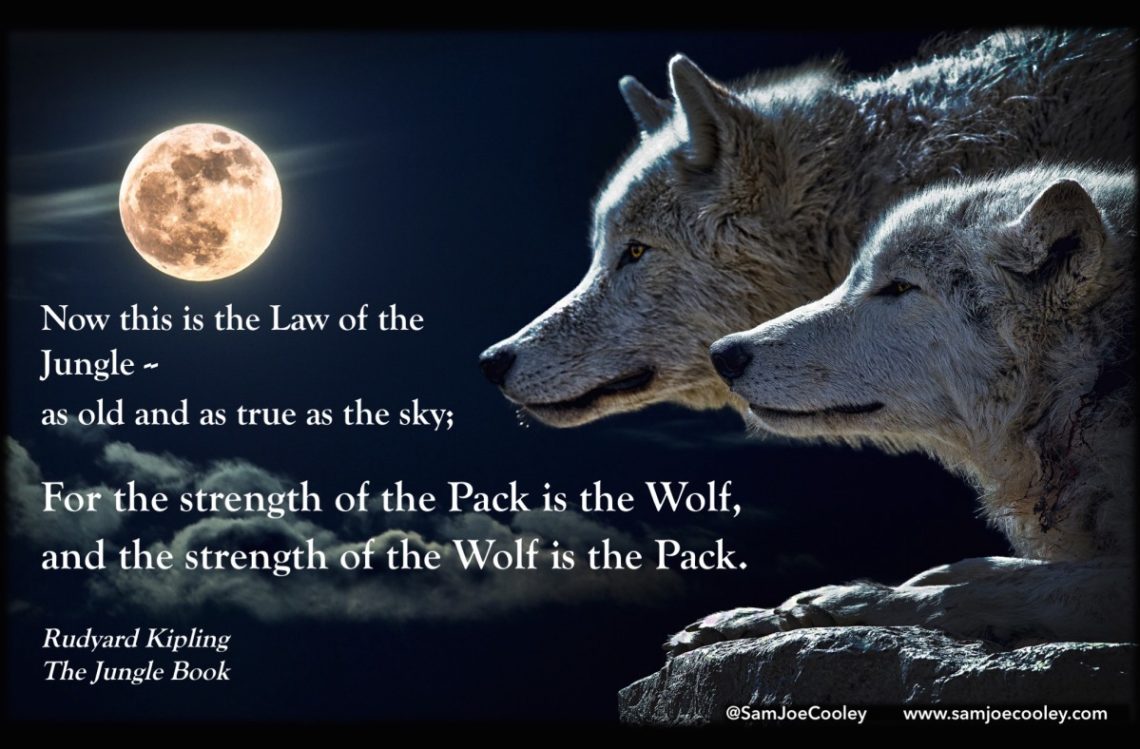
According to the laws of the wolf pack …
What myths have not been invented about wolves! A terrible beast that only thinks how to tear and eat everyone around, and iron discipline and fear of the superior reign in the flock. However, reality, as studies show, has nothing to do with these prejudice. By what laws does a wolf pack live?
Photo: wolves. Photo: pixabay.com
Contents
real family
People at all times were afraid and hated wolves. For example, during the Soviet era, the wolf was considered an “undesirable species”, almost parasitic. They fought him with the most barbaric methods, wanting to completely exterminate him. But, despite this, wolves are the species with the largest habitat. And all thanks to their incredible intelligence and ability to cooperate.
Scientists who study wolves have a deep respect for these predators. And they talk about them most often as people, constantly drawing parallels with us (alas, not always in favor of the type of Homo sapiens).
The wolf pack is a real family, in the full sense of the word. As a rule, it consists of three age groups:
- The adult pair are wolves that breed. These are what are sometimes referred to as alpha individuals.
- Pereyarki – adolescents aged 1 – 2 years.
- Profits, or puppies – wolf cubs under the age of 1 year.
Contrary to popular belief, there is no linear hierarchy in the wolf family. Yes, there is a main pair, but the wolf pack has a complex role structure in which other animals can at times play a more important role than the leaders.
Everyone takes on the function that he can perform better than others, and the distribution of functions plays a key role in the life of the pack.
And in the wolf family, personal attachments between individual members of the pack play a huge role.
In the photo: a pack of wolves. Photo: wikimedia.org
Members of the pack regroup during the year. They can walk in groups and singly, but this does not mean that the pack has broken up. After all, if you leave for work in the morning, does this mean that you are no longer part of your family? So are wolves: they can go about their business for quite long distances, and then return to the rest of the family.
Howling is the way wolves communicate. For example, when the members of the pack disperse, they howl to understand where each of them is. By the way, wolves do not howl at the moon – they just raise their heads, because it is impossible to howl with a lowered head.
Love for life
Wolves are faithful spouses. The pair is formed for life, and the male takes an active part in caring for offspring and raising cubs. Treason among wolves never happens and under no circumstances.
Photo: wolves. Photo: www.pxhere.com
Moreover, even if the wolf plays a dominant role in the family, the female, who has small cubs, becomes quite aggressive and very demanding of her husband. So the wolf tirelessly drags her food, and only after she eats her fill, feeds the cubs and starts stocking up, can he breathe freely and finally eat and rest himself.
Little kids – little troubles
Wolf cubs are born in the spring and up to 4 months do not leave the so-called “center” – the center of the pack’s territory. At this time, they communicate only with their parents and even practically do not see their older brothers and sisters, who go to live on the periphery of the site.
In the autumn, when the pereyarki are again allowed to the hearth, they get to know the kids. And by winter, the whole flock again sharply masters the entire territory under their jurisdiction. But the younger generation (wolf cubs up to 1 year old) behaves extremely prudently and cautiously, children are afraid of everything new and unfamiliar.
An interesting fact: Timber wolves tend to have more males in their litter than females.
Photo: flickr.com
Oh those teenagers!
As far as wolf cubs are shy and cautious, teenagers (pereyarki) are so curious and even a little reckless. They are ready to poke their nose anywhere, everywhere they rush first. And if you saw a wolf standing in the forest and carefully looking at you – most likely, this is a curious teenager who is learning about the world.
In the spring, when a new brood is born, one-year-old over-flyers are driven away from the hearth to the periphery of the site, where they keep in youth groups and singly.
Photo: flickr.com
By the way, ungulates that live on the periphery of the wolf territory experience more stress than those who live near the wolf den. This is explained simply: if adult wolves hunt prudently, do not pursue the victim for a long time, so as not to waste energy in vain (if you didn’t manage to catch it right away, then it’s better to look for more accessible prey), then the over-flyers get carried away and in excitement can pursue a potential victim for a long time.
However, the efficiency of their efforts is low. In general, the successful hunting of wolves is approximately 30% of all cases, while adolescents more often beg for food from an adult couple than contribute to the common cause, so they are more likely not helpers, but a burden.
But each failure of the wolf is an additional experience for the victim, so teenagers, unwittingly, teach ungulates to be more prudent and careful. And they are driven to live closer to the hearth – with adult wolves, wild boars, elks and roe deer are calmer than with restless pereyarki.
The continuity of generations
Having matured, pereyarki often leave to look for a mate and create their own family. However, it happens that a young she-wolf, having found a “husband”, comes to give birth to wolf cubs to the parent hearth. And then, when the former adult couple gets old and, for example, the she-wolf dies, the young couple takes the place of leaders. And the elderly wolf remains to live out his life next to the young ones in the role of grandfather.
If there are two breeding females in a flock – for example, a mother and daughter, who, of course, finds a “husband” on the side, then the rut of the older parental pair shifts to an earlier time than the young one. Thus, it does not happen that two females at once “hit hormones in the head”, and it is possible to avoid conflicts.
But two adult females in a flock are extremely rare. After all, if male wolves during conflicts demonstrate aggression more than they try to use their teeth, then if two females grapple, it will be a disaster. That is why it often happens that in a pack there are two adult male wolves than two adult she-wolves.
Photo: flickr.com
supreme value
Wolves touchingly care for cubs, and wolf cubs have the status of inviolability in the pack. True, there is one caveat – if hunters find wolf cubs, adult wolves do not protect newborn puppies: the life of an adult wolf “costs” more.
However, this does not mean that wolves are not capable of a feat for the sake of another. Altruism is a thing that was not invented by man. Wolves are ready to do a lot for any member of the pack, including fighting and sacrificing themselves.
The meaning of the life of wolves is the relationship to each other, the value of the family. If one of the family members is killed, it is a tragedy for the rest, and they sincerely mourn.
Professor, researcher of wolves Yason Badridze said at one of his lectures that a person came up with 10 commandments that he constantly violates, but wolves in this sense are different from us – their laws are respected sacredly. And if the aggressiveness of one individual goes beyond the norm, the whole community unites against it, and such an individual will not find a partner, which means that these genes will not be passed on to the next generations.
Photo: pixnio.com
Wolf devotion is well illustrated by one case.
A couple of wolves were herded using flags. They were surrounded, and then it turned out that there were no wolves in salary … no. And when the traces began to “read” what happened, an amazing thing turned out.
The male jumped over the flags, but the female remained inside. The wolf returned to the salary, they “conversed”, and he jumped again – but the she-wolf did not dare. Then the male gnawed through the rope, and the flags fell to the ground at a distance of about half a meter from each other, but the female still did not dare to leave the salary. And the wolf took the end of the rope in his teeth and dragged the flags aside, freeing a wider passage, after which both were saved.
However, wolves keep many more secrets and mysteries. And despite the fact that humans and wolves have lived side by side for thousands of years, we still know very little about these amazing gray predators.
Perhaps if we find the wisdom in ourselves to overcome ancient prejudices against amazing, smartest animals, they will surprise us more than once.





